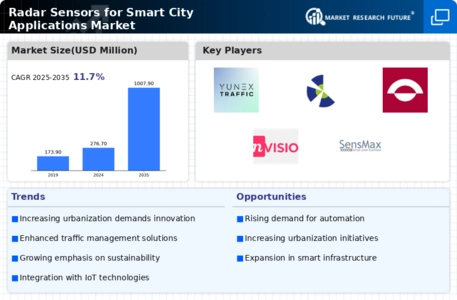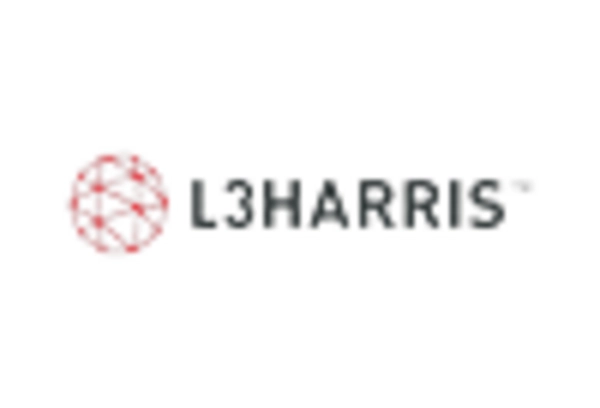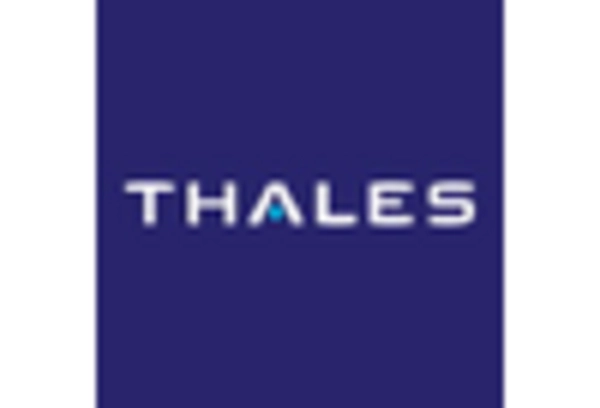North America : Market Leader in Innovation
North America is poised to maintain its leadership in the Radar Sensors for Smart City Applications Market, holding a significant market share of 139.0 million in 2025. The region's growth is driven by increasing urbanization, government initiatives for smart city projects, and advancements in radar technology. Regulatory support for infrastructure development and public safety is also a key catalyst for market expansion.
The competitive landscape is robust, with major players like Honeywell, Raytheon Technologies, and L3Harris Technologies leading the charge. The U.S. is the primary market, benefiting from substantial investments in smart city technologies. The presence of established companies and ongoing collaborations further enhance the region's market dynamics, ensuring continued growth and innovation.
Europe : Emerging Smart City Hub
Europe is rapidly evolving as a hub for smart city solutions, with a market size of 85.0 million in 2025. The region's growth is fueled by stringent environmental regulations, a push for sustainable urban development, and increased funding for smart infrastructure projects. Countries are prioritizing the integration of advanced technologies, including radar sensors, to enhance urban mobility and safety, aligning with EU directives on smart city initiatives.
Leading countries such as Germany, France, and the UK are at the forefront of this transformation, supported by key players like Siemens and Bosch. The competitive landscape is characterized by innovation and collaboration among technology providers and municipalities. The European market is expected to see significant advancements as cities adopt integrated solutions for traffic management and public safety, enhancing overall urban living standards.
Asia-Pacific : Rapidly Growing Market
Asia-Pacific is witnessing a rapid surge in demand for radar sensors, with a market size of 45.0 million in 2025. The region's growth is primarily driven by rapid urbanization, increasing investments in smart city projects, and the need for enhanced public safety measures. Governments are actively promoting smart city initiatives, which are expected to catalyze the adoption of advanced technologies, including radar sensors, across urban landscapes.
Countries like China, Japan, and India are leading the charge, with significant investments in smart infrastructure. The competitive landscape features both local and international players, including NXP Semiconductors and Kongsberg Gruppen. As cities in the region continue to expand, the demand for innovative solutions to manage urban challenges will drive the radar sensor market forward, ensuring a dynamic growth trajectory.
Middle East and Africa : Emerging Market Potential
The Middle East and Africa region is emerging as a potential market for radar sensors, with a size of 9.68 million in 2025. The growth is driven by increasing urbanization, government investments in smart city initiatives, and the need for improved public safety and traffic management. Countries are beginning to recognize the importance of integrating advanced technologies to enhance urban living, supported by various regulatory frameworks promoting smart infrastructure.
Leading countries such as the UAE and South Africa are making strides in adopting smart city solutions. The competitive landscape is still developing, with opportunities for both local and international players to enter the market. As urban areas continue to grow, the demand for radar sensors is expected to rise, paving the way for innovative applications in smart city projects.
















Leave a Comment